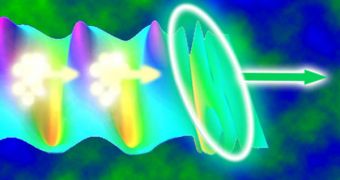The study of subatomic particles is, as everyone knows, mostly conducted in particle accelerators, those huge devices that accelerate protons and electrons to nearly the speed of light, and then smash them together. The ensuing collision breaks the objects into their basic components, and physicists then spend an enormous amount of time studying the results and drawing scientific conclusions. However, we have reached a point where we need more powerful smashers, but without the impressive sizes reached by, for example, CERN's Large Hadron Collider (LHC).
Because building accelerators larger than 15 to 20 miles in circumference becomes financially unfeasible, new solutions are required for the next generation of smashers, more powerful than existing ones, but also much smaller. Now, an international team of physicists, comprised of researchers from Germany and Russia, believe they may have discovered a new method of accelerating particles, which they have dubbed proton-driven plasma-wakefield acceleration (PWFA).
Basically, the new technique makes use of electrons as if they were bullets. In conventional electron research-oriented accelerators, the particles have to be accelerated in a line, as opposed to protons, which can be moved in circles. By using plasma – which is a very hot gas in which electrons have been stripped away from their atoms – and an electron launcher of sorts, the team hypothesize that they could actually shoot the electrons at enormous speeds through the plasma.
This could potentially generate a magnetic field about 1,000 times stronger than those obtained today, which, at least hypothetically, means that future accelerators for electrons could be 1,000 times smaller than they are today. These ideas were already tested in 2007, when electrons accelerated over a meter managed to get twice as much energy than those accelerated over the entire two-mile track of the SLAC National Accelerator Laboratory.
“I look forward to watching these ideas continue to develop. There is still a lot of research and development needed to nurture these ideas. But in the not too distant future, we may find that ideas such as this have transformed the field of particle accelerators to make future machines that are both smaller and more affordable to society,” SLAC PWFA team member Mark Hogan explains, as quoted by Wired.

 14 DAY TRIAL //
14 DAY TRIAL //